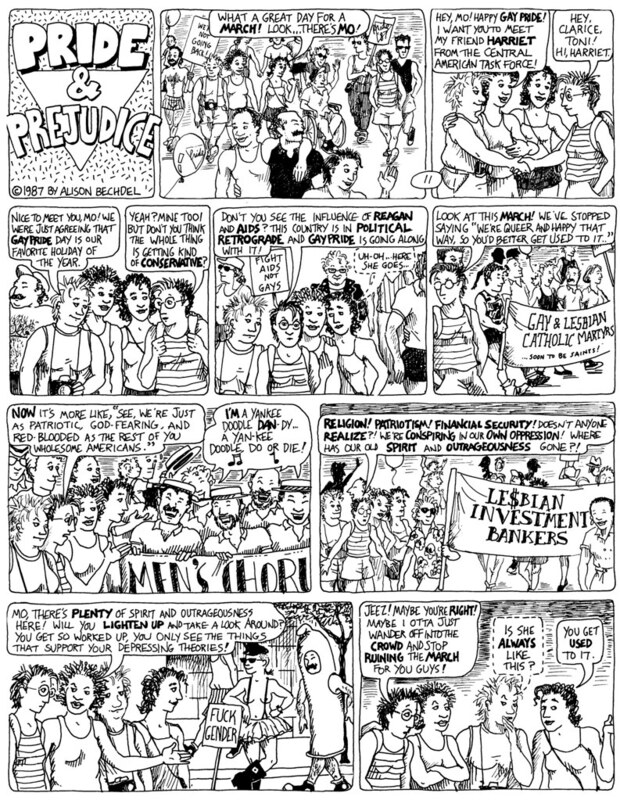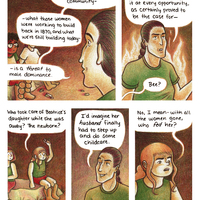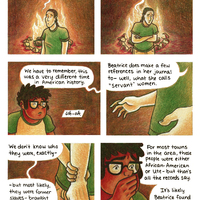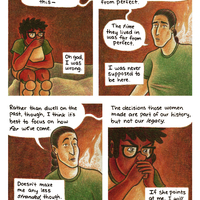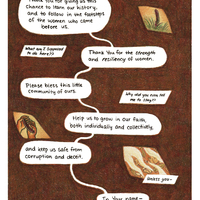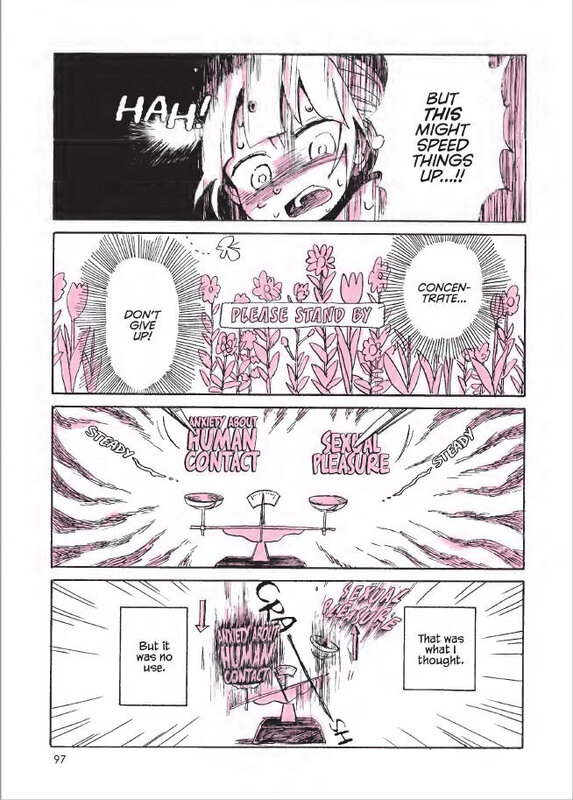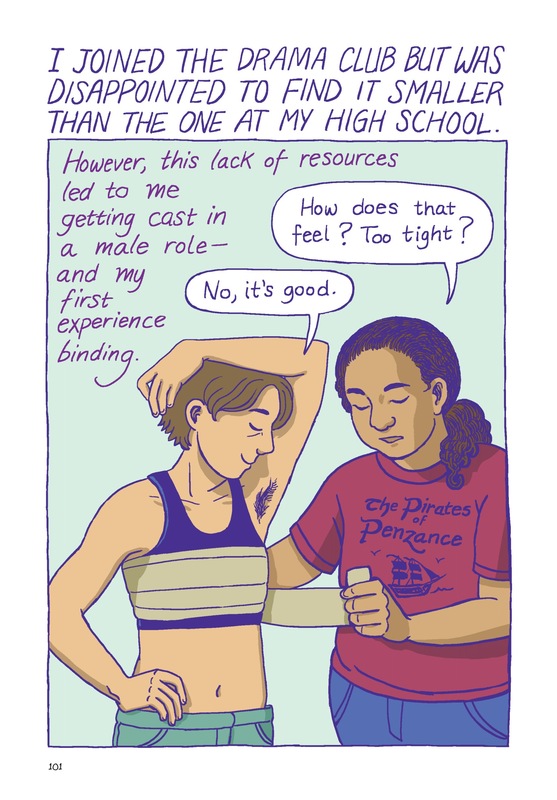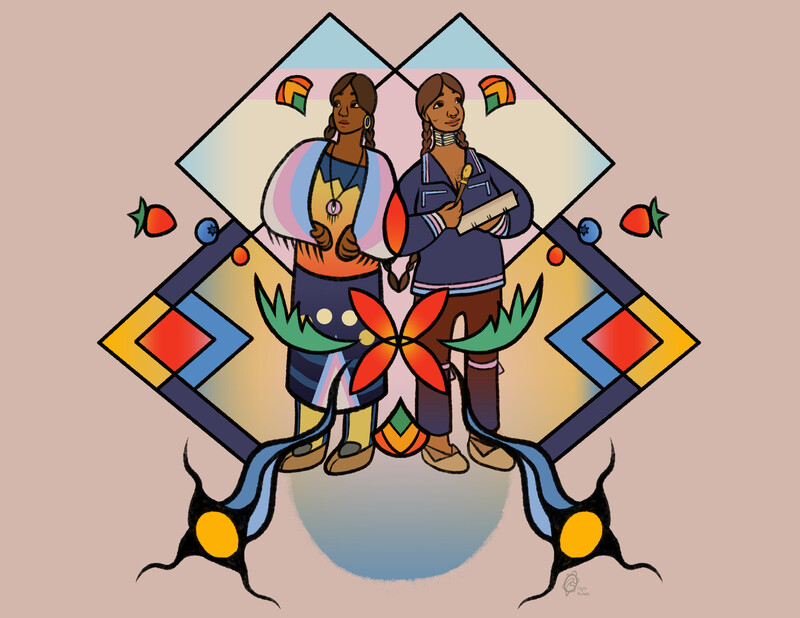Contemporary
The Contemporary period brought along changes in medium and representation that were bolstered by the birth of the internet. The democratization of media allowed greater access to tools to create and disseminate art, facilitating a plethora of diverse voices into the queer visual art scene. This was accompanied by challenges to what is considered "legitimate" art through the inclusion of mediums historically derided as lesser, such as comics and zines. Art from the Contemporary period often focuses on the overt exploration of queer themes and bodies in art unburdened by the fear of censorship, arrest, or ostracization. Race, gender, and sexuality interact and intertwine in many of these works of art to form complex queer, human identities.
Alison Bechdel's seminal serial comic strip, Dykes to Watch Out For, ran from 1983 to 2008. Self-syndicated for twenty-five years, the comic ran in a variety of gay and lesbian newspapers, before it switched over to online publication. The strip would later be collected in numerous volumes under various related titles. Dykes to Watch Out For is one of the longest running and most successful queer comic, with Bechdel calling the strip a "countercultural institution among lesbians."
In this particular strip, main character Mo, in her usual fashion, bemoansthe changing landscape of queer culture to her friend's chagrin. The strip lampoons the sanitization and depoliticization of gay pride to appear more "wholesome" and "mainstream" while poking fun at Mo's overly critical nature and her overwhelming focus on the negative aspects of life. Despite the strip's publication in 1987, similar conversations about the purpose and capitalization of pride parades continues to this day.
Webcomics constitute a popular source of queer contemporary art for their ease of publication it provides the artists. One such example is Melanie Gillman's As the Crow Flies, a webcomic turned graphic novel published in 2017. As the Crow Flies follows 13 year old Charlie Lamonte's experience as the only black, queer camper at a rustic, Christian retreat for teenage girls. As Charlie navigates their week long experience at Camp Three Peaks, they question the rhetoric of the retreat's founding narrative and their place among it when it so clearly alienates their lived experience.
Kabi Nagata's My Lesbian Experience With Loneliness is an autobiographical manga that recounts the author's struggle with mental health, employment, and her familial relations while she explores and comes to term with her sexuality. With wry self-deprecating humor and unflinching honesty, Nagata recounts her first sexual experience with a hired female escort. In these two pages, Nagata depicts how her mental health troubles impact her desire for sexual intimacy. Nagata would later follow up this manga with two more volumes, titled My Solo Exchange Diary volumes 1 and 2, continuing her autobiography of her exploration of her sexuality and the familial fallout caused by the publication of her first book.
Maia Kobabe, who uses e/em/eir pronouns, charts eir journey of self-identity in eir graphic novel titled Gender Queer. The novel started as the author's way to explain eir asexuality and nonbinary gender identity to eir family, before growing into its own project. The pages selected below show some defining moments of Kobabe's childhood wherein e removes their shirt at a beachfront before being reprimanded by eir teacher as well as experimenting with binding eir chest for a school play in high school. Recently, the book has been banned from several school libraries for a scene with sexually explicit content. Kobabe responded to the controversy re-asserting the need to provide queer kids with queer books and a suggestion that concerned parents are taking umbrage not with the sexual content of the book, but rather its LGBTQ+ content. Kobabe's book is just one of many queer novels that have come under fire for "pornographic" content as part of a campaign to suppress LGBTQ+ content.
Elijah Forbes is an up-and-coming artist that is a Two Spirit person from the Waganaising Odawa people. He works as a freelance artist and is currently developing a graphic novel. Common themes in his work include transgender life, Indigenous experience and sovereignty, urban fantasy, and gender euphoria. Below is his work "Two Spirit People Are Sacred".
